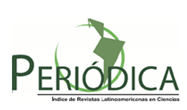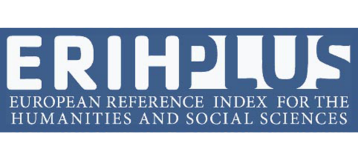Revisión al estudio del cambio conceptual en el aprendizaje de la química
DOI:
https://doi.org/10.37511/tesis.v16n2a7Resumen
Antecedentes: Dentro del cambio conceptual, existen diferentes perspectivas teóricas desde las cuales se estudia la naturaleza, las características y los mecanismos de cambio de las ideas de los estudiantes. Conocer estas ideas es fundamental antes de desarrollar los procesos de enseñanza. Objetivo: Conocer los autores y artículos más citados en el área del cambio conceptual y aprendizaje de la química, al igual que las revistas en las que se publican estos artículos. Método: Se realizó la búsqueda en las bases de datos Web of Science y Scopus entre los años 2009 y 2019, teniendo como criterios de inclusión: el área de conocimiento (estudios en educación), tipo de documento artículo de investigación publicados en revistas especializadas, en idioma inglés, español y portugués. Resultados: después de aplicar los criterios de inclusión finalmente se analizan 12 artículos a través del paquete estadístico bilbiometrix en el software R. Conclusión: es evidente el predominio de los enfoques unidimensionales en el estudio del cambio conceptual en química. En estos estudios, prevalecen los enfoques cuantitativos y mixtos. Por otra parte, hay una creciente tendencia del estudio de las ideas de los estudiantes, desde una miranda multidimensional en la que las emociones, la interacción social y la autorregulación inciden en los procesos de cambio conceptual.
Descargas
Referencias
Amin, T. G., Smith, C. L. & Wiser, M. (2014). Student conceptions and conceptual change: Three overlapping phases of research. In Handbook of Research on Science Education, Volume II (pp. 71-95). New York. Routledge. Ciudad. https://doi.org/10.4324/9780203097267.
Aria, M. & Cuccurullo, C. (2017). bibliometrix: An R-tool for comprehensive science mapping analysis. Journal of Informetrics, 11(4), 959–975. https://doi.org/10.1016/j.joi.2017.08.007
Adadan, E., Trundle, K. C. & Irving, K. E. (2010). Exploring grade 11 students' conceptual pathways of the particulate nature of matter in the context of multirepresentational instruction. Journal of research in science teaching, 47(8), 1004-1035. https://onlinelibrary.wiley.com/doi/abs/10.1002/tea.20366
Basili, P. A., & Sanford, J. P. (1991). Conceptual change strategies and cooperative group work in chemistry. Journal of Research in Science Teaching, 28(4), 293-304. https://doi.org/10.1002/tea.3660280403
Bell, B., Brook, A. & Driver, R. (1985). An Approach to the Documentation of Alternative Conceptions in School Students’ Written Responses. British Educational Research Journal, 11(3), 201–213. https://doi.org/10.1080/0141192850110301
Bodner, G. & Pribyl, J. (1987). Spatial Ability and its Role in Organic Chemistry: A Study Of Four Organic Courses. Journal Of Research In Science Teaching, 24(3), pp. 229-240. https://onlinelibrary.wiley.com/doi/abs/10.1002/tea.3660240304
Chi, M. T., Slotta, J. D. & De Leeuw, N. (1994). From things to processes: A theory of conceptual change for learning science concepts. Learning and instruction, 4(1), 27-43. https://doi.org/10.1016/0959-4752(94)90017-5
Clough, E. E., & Driver, R. (1986). A study of consistency in the use of students’ conceptual frameworks across different task contexts. Science Education, 70(4), 473–496. https://doi.org/10.1002/sce.3730700412
Chi, M. T. (2009). Three types of conceptual change: Belief revision, mental model transformation, and categorical shift. En International handbook of research on conceptual change (pp. 89-110). New York. Routledge. https://doi.org/10.4324/9780203874813
Caravita, S. & Halldén, O. (1994). Re-framing the problem of conceptual change. Learning and instruction, 4(1), 89-111. https://doi.org/10.1016/0959-4752(94)90020-5
Cooper, M. M., Corley, L. M., & Underwood, S. M. (2013). An investigation of college chemistry students' understanding of structure–property relationships. Journal of Research in Science Teaching, 50(6), 699-721. https://doi.org/10.1002/tea.21093
Callinan, C. (2014). Constructing scientific knowledge in the classroom: a multimodal analysis of conceptual change and the significance of gesture [Tesis de Doctorado. University of Leicester]. https://leicester.figshare.com/articles/thesis/Constructing_scientific_knowledge_in_the_classroom_a_multimodal_analysis_of_conceptual_change_and_the_significance_of_gesture/10144841/1
Driver, R. (1986). Psicología cognoscitiva y esquemas conceptuales de los alumnos. Enseñanza de las ciencias: revista de investigación y experiencias didácticas, 4(1), 3-15. https://www.raco.cat/index.php/Ensenanza/article/view/50854/92858
Driver, R. (1989). Students’ conceptions and the learning of science. International Journal of Science Education, 11(5), 481–490. https://doi:10.1080/0950069890110501
Driver, R. & Erickson, G. (1983). Theories-in-Action: Some theoretical and empirical issues in the study of students’ conceptual frameworks in science. Studies in Science Education, 10(1), 37–60. http://dx.doi.org/10.1080/03057267808559857
Driver, R. & Scanlon, E. (1989). Conceptual change in science: A research programme. Journal of Computer Assisted Learning, 5(1), 25–36. https://doi.org/10.1111/j.1365-2729.1989.tb00195.x
Driver, R., Asoko, H., Leach, J., Mortimer, E. & Scott, P. (1999). Conhecimento científico na sala de aula. Química Nova Na Escola, 5, 31-40. http://qnesc.sbq.org.br/online/qnesc09/aluno.pdf
Ebenezer, J. V. & Gaskell, P. J. (1995). Relational conceptual change in solution chemistry. Science Education, 79(1), 1-17. https://doi.org/10.1002/sce.3730790102
Freire, M., Talanquer, V. & Amaral, E. (2019). Conceptual profile of chemistry: a framework for enriching thinking and action in chemistry education. International Journal of Science Education, 41(5), 674-692. https://doi.org/10.1080/09500693.2019.1578001
Furió, C. J. & Furió, C. (2018). Dificultades conceptuales y epistemológicas en el aprendizaje de los procesos químicos. Educación química, 11(3), 300-308. http://dx.doi.org/10.22201/fq.18708404e.2000.3.66442
Gilbert, J. K., Osborne, R. J., & Fensham, P. J. (1982). Children’s science and its consequences for teaching. Science Education, 66(4), 623–633. https://doi.org/10.1002/sce.3730660412
Gilbert, J. K. & Watts, D. M. (1983). Concepts, misconceptions and alternative conceptions: Changing perspectives in science education. Studies in Science Education, 10(1), 61–98. https://doi.org/10.1080/03057268308559905
Gilbert, J.K. & Treagust, D. (Ed.) (2009). Macro, Submicro and Symbolic Representation and the Relationship Between Them: Key Models in Chemical Education. Multiple Representation en Chemical Education. Modeles and Modeling in Sciencie Education 4, pp. 1-7. Printed in United Kingdom and Australia. Editorial Springer. https://doi.org/10.1007/978-1-4020-8872-8_1
Gois, J.; Giordan, M. (2003). Semiótica na química: a teoria dos signos de Peirce para compreender a representação estrutural. Cadernos Temáticos de Química Nova na Escola, 7, p. 34-42, 2007. http://qnesc.sbq.org.br/online/cadernos/07/a06.pdf
Goldin-Meadow, S. (2004). Gesture's role in the learning process. Theory into practice, 43(4), 314-321. https://doi.org/10.1207/s15430421tip4304_10
Harrison, A. G., & Treagust, D. F. (2001). Conceptual change using multiple interpretive perspectives: Two case studies in secondary school chemistry. Instructional Science, 29(1), 45-85. https://doi.org/10.1023/A:1026456101444
Harle, M, & Towns, M. (2011) A Review of Spatial Ability Literature, Its Connection to Chemistry, and Implications for Instruction. Journal of Chemical. Education, 88 (3), pp. 351–360. https://doi.org/10.1021/ed900003n
Hadenfeldt, J. C., Liu, X., & Neumann, K. (2014). Framing students’ progression in understanding matter: a review of previous research. Studies in Science Education, 50(2), 181-208. https:// doi:10.1080/03057267.2014.945829
Johnstone, A. H. (1991). Why is science difficult to learn? Things are seldom what they seem. Journal of computer assisted learning, 7(2), 75-83. https:// doi.org/10.1111/j.1365-2729.1991.tb00230.x
Kendon, A. (1988). How gestures can become like words. En This paper is a revision of a paper presented to the American Anthropological Association, Chicago, Dec 1983.Hogrefe & Huber Publishers. https://psycnet.apa.org/record/1992-98173-004
Kendon, A. (2004). Gesture: Visible action as utterance. Cambridge University Press. https://doi.org/10.1017/CBO9780511807572
Matthews, M. R. (2004). Thomas Kuhn's impact on science education: What lessons can be learned? Science Education, 88(1), 90-118. https://doi.org/10.1002/sce.10111
Margel, H., Eylon, B. S., & Scherz, Z. (2008). A longitudinal study of junior high school students' conceptions of the structure of materials. Journal of Research in Science Teaching: The Official Journal of the National Association for Research in Science Teaching, 45(1), 132-152. https://doi.org/10.1002/tea.20214
Novack, M. A., Congdon, E. L., Wakefield, E. M., & Goldin-Meadow, S. (2017). Gesture’s role in reflecting and fostering conceptual change. In Converging Perspectives on Conceptual Change (pp. 97-104). New York. Routledge. https://doi.org/10.4324/9781315467139-13
Posner, G. J., Strike, K. A., Hewson, P. W., & Gertzog, W. A. (1982). Accommodation of a scientific conception: Toward a theory of conceptual change. Science education, 66(2), 211-227. https://doi.org/10.1002/sce.3730660207
Pea, R. D. (1994). Seeing What We Build Together: Distributed Multimedia Learning Environments for Transformative Communications. Journal of the Learning Sciences, 3(3), 285–299. https://doi:10.1207/s15327809jls0303_4
Pozo, J. A., Sanz, A., Crespo, G. & Limón, M. (1991). Las ideas de los alumnos sobre la ciencia: una interpretación desde la psicología cognitiva. Enseñanza de las Ciencias, 9(1),083-94. https://ddd.uab.cat/pub/edlc/02124521v9n1/02124521v9n1p83.pdf
Pozo, J. I. (1999). Más allá del cambio conceptual: el aprendizaje de la ciencia como cambio representacional. Enseñanza de las ciencias: revista de investigación y experiencias didácticas, 17(3),513-520. https://www.raco.cat/index.php/Ensenanza/article/view/21616
Roth, W. M. (2001). Gestures: Their role in teaching and learning. Review of educational research, 71(3), 365-392. https://doi.org/10.3102/00346543071003365
Roth, W. M., & Lawless, D. (2002). Scientific investigations, metaphorical gestures, and the emergence of abstract scientific concepts. Learning and instruction, 12(3), 285-304. https://doi.org/10.1016/S0959-4752(01)00023-8
Sinatra, G. M., & Pintrich, P. R. (2003). The Role of Intentions in Conceptual Change Learning: Gale M. Sinatra and Paul R. Pintrich. In Intentional conceptual change (pp. 10-26). Routledge. https://doi.org/10.4324/9781410606716-5
She, H. C., & Liao, Y. W. (2010). Bridging scientific reasoning and conceptual change through adaptive web‐based learning. Journal of Research in Science Teaching: The Official Journal of the National Association for Research in Science Teaching, 47(1), 91-119. https://doi.org/10.1002/tea.20309
Talanquer, V. (2009). On cognitive constraints and learning progressions: The case of
“structure of matter”. International Journal of Science Education, 31(15), 2123-2136. https://doi.org/10.1080/09500690802578025
Tamayo-Alzate, Ó. E. (2001). Evolución conceptual desde una perspectiva multidimensional aplicación al concepto de respiración (Tesis de doctorado). Universitat Autònoma de Barcelona. https://hdl.handle.net/10803/4688
Tamayo, O, A., E., & Sanmartí, N. (2003). Estudio multidimensional de las representaciones mentales de los estudiantes. Aplicación al concepto de respiración. Revista Latinoamericana de Ciencias Sociales, Niñez y Juventud, 1(1), 181-205. http://revistaumanizales.cinde.org.co/rlcsnj/index.php/RevistaLatinoamericana/article/view/338
Tamayo, O.E.A (2009). Didácticas de las ciencias: La evolución conceptual en la enseñanza y el aprendizaje de las ciencias. Manizales-Colombia. Editorial Universidad de Caldas. https://editorial.ucaldas.edu.co/product/didactica-de-las-ciencias-la-evolucion-conceptual-en-la-ensenanza-y-el-aprendizaje-de-las-ciencias/
Tamayo, O. E. A. (2010). Cambio conceptual transcultural desde una perspectiva integral. Ánfora, 17(28), 53-68. https://doi.org/10.30854/anf.v17.n28.2010.99
Tamayo, O. E. A. (2013). Modelos y modelización en la enseñanza y el aprendizaje de las ciencias. Enseñanza de las ciencias: revista de investigación y experiencias didácticas, (Extra), 3484-3487. https://www.raco.cat/index.php/Ensenanza/article/view/337618
Talanquer, V. (2010). Pensamiento intuitivo en química: suposiciones implícitas y reglas heurísticas. Enseñanza de las Ciencias, 28(2), 165-174. https://www.raco.cat/index.php/Ensenanza/article/view/200825/353384
Taber, K. S., & Tan, K. C. D. (2011). The insidious nature of ‘hard‐core’alternative conceptions: Implications for the constructivist research programme of patterns in high school students’ and pre‐service teachers’ thinking about ionisation energy. International Journal of Science Education, 33(2), 259-297. https://doi.org/10.1080/09500691003709880
Tseng, C. H., Tuan, H. L., & Chin, C. C. (2010). Investigating the Influence of Motivational Factors on Conceptual Change in a Digital Learning Context Using the Dual‐Situated Learning Model. International Journal of Science Education, 32(14), 1853-1875. https://doi.org/10.1080/09500690903219156
Urrútia, G., & Bonfill, X. (2010). Declaración PRISMA: una propuesta para mejorar la publicación de revisiones sistemáticas y metaanálisis. Medicina clínica, 135(11), 507- http://www.laalamedilla.org/Investigacion/Recursos/PRISMA%20Spanish%20Sept%202010.pdf
Vosniadou, S. (1989). Knowledge restructuring and science instruction. Center for the Study of Reading Technical Report; no. 455. http://hdl.handle.net/2142/17720
Vosniadou, S. (1994). Capturing and modeling the process of conceptual change. Learning and instruction, 4(1), 45-69. https://doi.org/10.1016/0959-4752(94)90018-3
Vosniadou, S. (2007). Conceptual change and education. Human development, 50(1), 47-54. https://doi.org/10.1159/000097684
Vosniadou, S. (Ed.). (2009). International handbook of research on conceptual change. New York. Routledge. https://doi.org/10.4324/9780203874813
Vosniadou, S. (2017). Initial and scientific understandings and the problem of conceptual change. En Converging Perspectives on Conceptual Change (pp. 33-41). Routledge. https://doi.org/10.4324/9781315467139-4
Wu, H.K., & Shah.P. (2004). Exploring Visuospatial Thinking in Chemistry Learning. Science Education, 88 (3) pp.465-492. https://doi.org/10.1002/sce.10126
Zupic, I., & Čater, T. (2015). Bibliometric methods in management andorganization. Organizational Research Methods, 18(3), 429-472. https://doi.org/10.1177/1094428114562629
Descargas
Publicado
Número
Sección
Licencia

Esta obra está bajo una Licencia Creative Commons Atribución-NoComercial-













